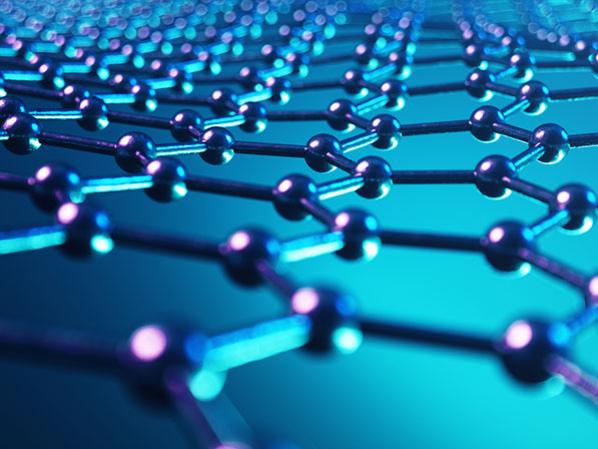What is Graphene?
June 2, 2021

First discovered in the 1940s, graphene is a space-age material that a growing number of industries are experimenting with. Graphene is a single layer of carbon atoms, tightly bound in a hexagonal honeycomb lattice. Graphene is the thinnest compound known to man at one atom thick and is the lightest material in history.
Let’s explore the properties, applications and potential health and safety effects of graphene which is in the category of nanomaterials.
What are the Physical & Chemical Properties of Graphene?
The chemical and physical properties of graphene have not been fully investigated yet. Graphene is categorized as transparent and extremely thin. It is considered 2-dimensional compared to graphite which is a 3-dimensional crystal form of carbon. Graphene is also considered 100-300 times stronger than steel. It is an excellent conductor of heat and electricity as it conducts heat twice as effectively as diamonds and conducts electricity 13x better than copper. Beyond these inherent physical and chemical attributes, graphene shows light absorption and antimicrobial characteristics.
Graphene can be stacked, wrapped or rolled, to form graphite, football-like ‘buckyballs’ or carbon nanotubes (CNTs), this flexibility makes it useful for a variety of industrial applications.
What is Graphene Used For
Due to its unique properties, there is a vast array of applications for graphene. Here are some:
- Aerospace
- Automotive
- Barrier properties
- Coatings
- Composites
- Concrete and cement
- Corrosion resistance
- Electronics
- Energy storage
- Energy generation
- Magnets
- Medical Appliances
- Plastics
- Polymers
- Sensors
- Semiconductors
- Structural materials
- Touch screens
- Transistors
- Waterproof coatings
- Water filtration
What are the Health Effects of Graphene?
Because graphene is such a new material and toxicological research is only just catching up to its industrial use, there are no occupational exposure limits for graphene. Immediate effects from short-term exposure suggest it may be harmful to humans if inhaled. There is also evidence that it may cause respiratory tract irritation. Preliminary research on animals shows graphene has the potential to harm the lungs, according to Health Canada.
Although these are early days, there are no recorded observations of skin irritation or skin sensitization, graphene may cause eye irritation. Graphene may be harmful if swallowed and cause internal damage. There are currently no known chronic effects from long-term exposure or reports of carcinogenicity in animals. No indication of reproductive and developmental toxicity has been observed either.
Future studies will need to evaluate the potential impact of graphene on human health and the environment.
How Chemscape Can Help
Let Chemscape Safety Technologies help you stay up to date on all the latest occupational health and safety news and keep your workplace safe from potential chemical hazards like graphene with our chemical management software. Contact us to book a demo today.



